I scrunched up my eyes, trying to find any point in the room that was not spinning. Smiling calmly at the Lagavulin distillery tour guide, inside I was locked in a fierce battle with sobriety. Already six drams into my Islay whisky pilgrimage this was proving to be a proper bike packing adventure.
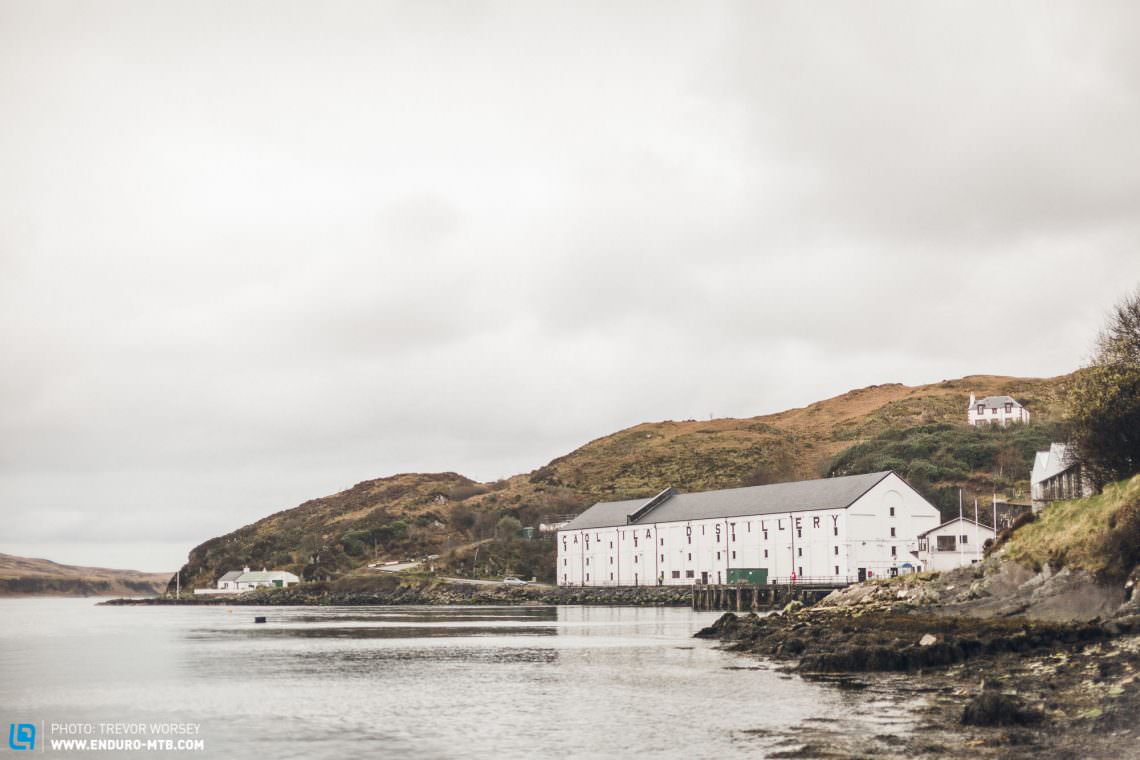
As any true whisky connoisseur will know, sipping one of the Islay malts is a unique experience, leaving a finish on the palate, a host of complex flavours delivered with a thump of bonfire ash. Iconic drams like Lagavulin, Laphroaig, Ardbeg and the smokiest of all, the Bruichladdich Octomore are essential stops on any whisky highway. To taste them in the comfort of your favourite armchair is one thing, but to take sips while wiping your fingers down the phenolic stained white walls of the Laphroaig distillery with peaty residue laying thick in the air is another.
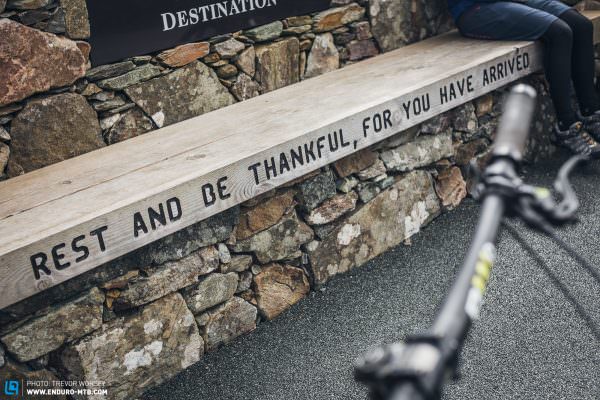
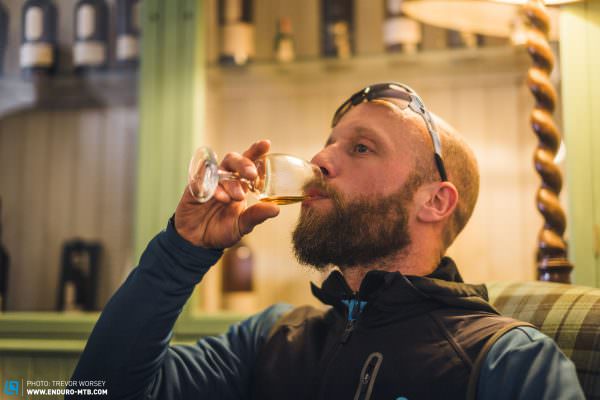
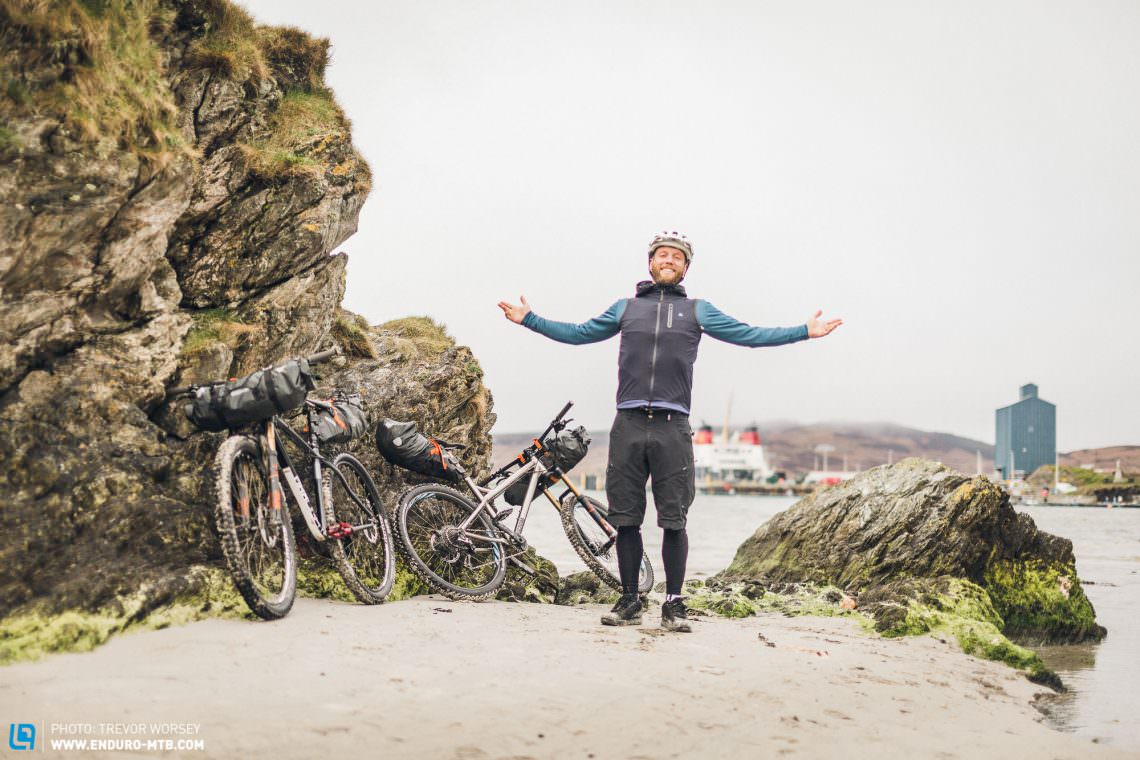
To mature the perfect single malt takes time, it cannot be rushed. However, time is something we had plenty of, for we were bikepacking. Bikepacking is the best way to travel in a new place, with the ability to cover great distances and free from the isolating cocoon of a car you are forced to be self-sufficient, to savour the moment and above all to interact with your surroundings. What better mode of transport could there be for a pilgrimage to the island of Islay, the knuckle end of Scotland’s whisky spectrum, and let’s not forget, freed from the need to drive, starting drinking at 11am no longer seemed irresponsible.
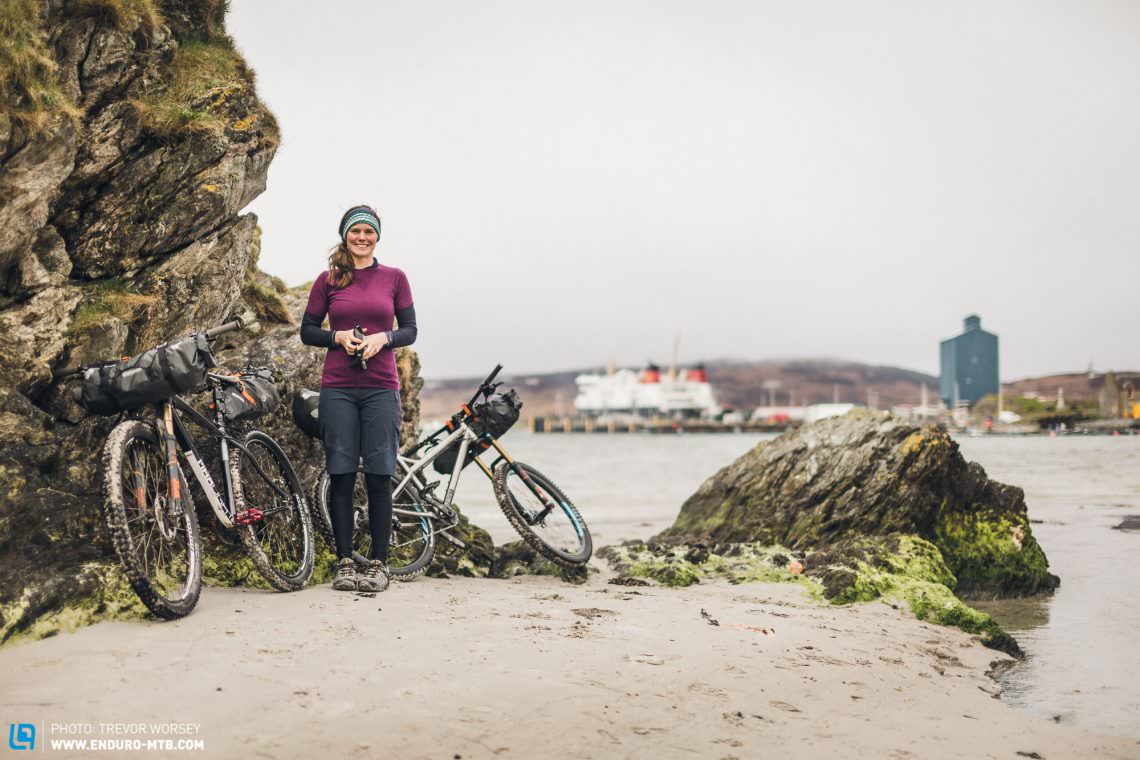
Lying off the west coast of Scotland, just 40 km long, Islay is home to eight distilleries. I can still remember my first taste of an Islay malt, a chance discovery of an opened bottle of Laphroaig 10-Year-Old at the back of a long forgotten drinks cupboard, different to my previous ‘gentle hug’ experiences of the whisky it was like an uppercut from Mike Tyson. This bottle changed everything for me, igniting a passion to discover, to taste, to lie about cost of bottles to my wife and to travel to the small Scottish Island that is the southernmost of the Inner Hebrides.
Many years later after that first encounter, I found myself finally walking down the Port Ellen ferry loading bay with our heavily laden bikes, the smell of seaweed and sand on the air; taking a deep breath I imagined I could detect a whiff of the Angel’s share on the wind, the whisky lost from the barrels due to evaporation. The few cars that had joined us on the ferry quickly disappeared to wherever people goto on Islay, leaving us alone to explore the bustle of the town of Port Ellen, four minutes later we were done. We were on a personal pilgrimage to taste the many whiskies of the island, well, actually I was, but in a feat of masterful negotiation I had convinced my whisky-hating wife that it would be a great idea – I am still not sure how I did it?
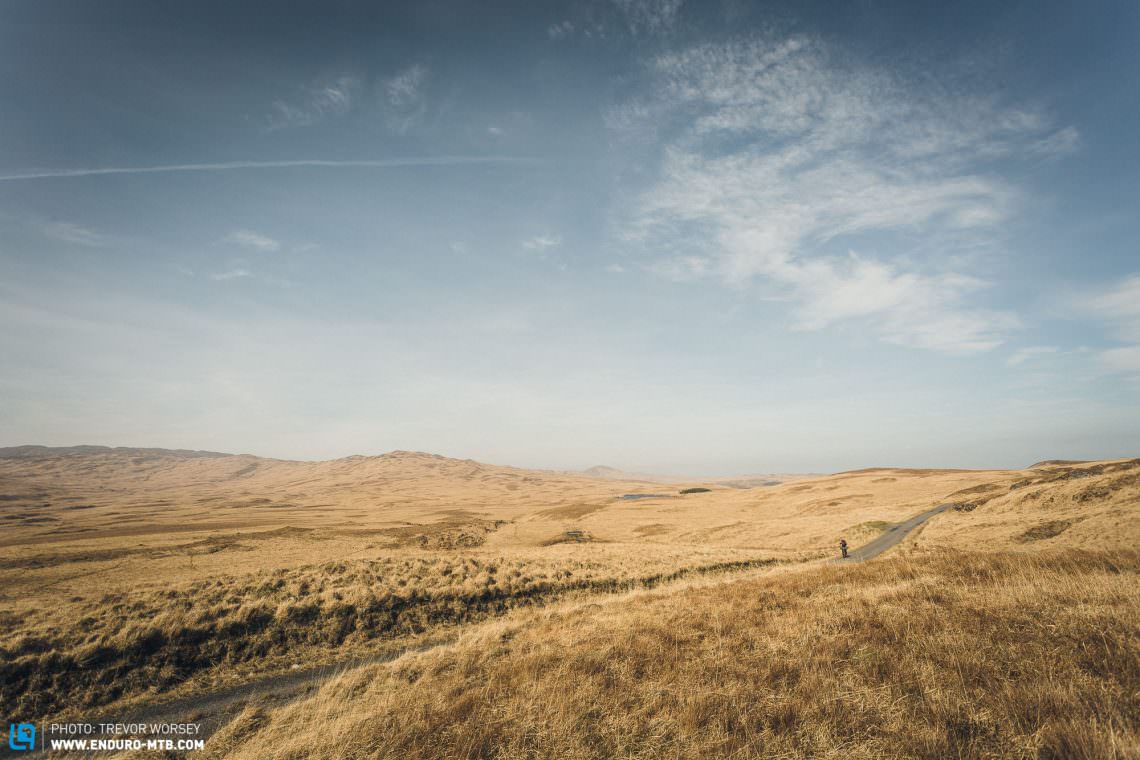
The discovery of whisky was a happy accident, early beer brewers noticed that the clear liquid condensing on cold windows during the brewing process was fiercely alcoholic, a nation already awash with alcohol quickly learned how to get more drunk.



Whisky to Scotland is big business, over 38 bottles of whisky are exported from Scotland every second and it rumoured that the huge warehouses scattered over the land contain over 20 million casks of maturing malt, 4 for every person living there – don’t tell the Scots, there will be an uprising.
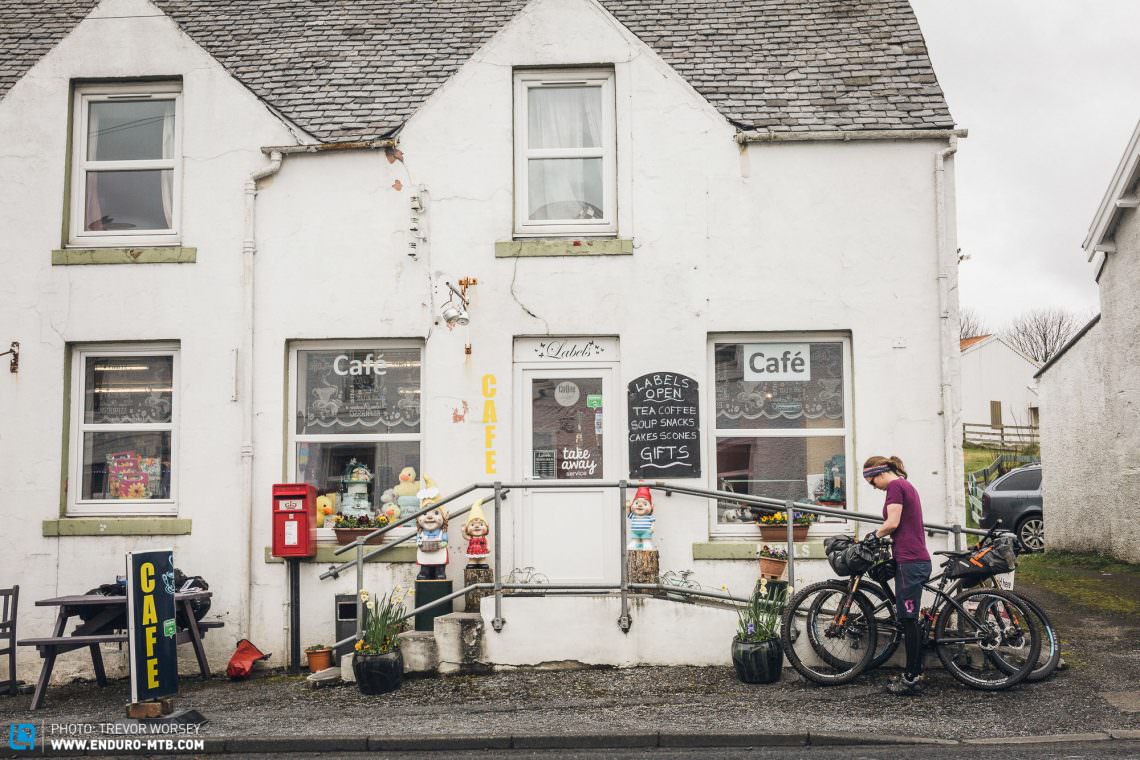
“It’s on the house”. I did not know how to respond, I know we looked a little scruffy in our ‘just take one set of riding gear for all’ but did not think we had gone ‘full hobo’ yet. But after checking out our bikes, the owner of the distillery cafe simply would not take our money for the coffees. Island life has a slower pace, and moving slower on a bike creates a warmer connection to the locals, you’re not just another tourist, cataloging selfies, viewing life through the black mirror, when you bikepack you are immersed not isolated, you fall in with the rhythms and cycles of the people.
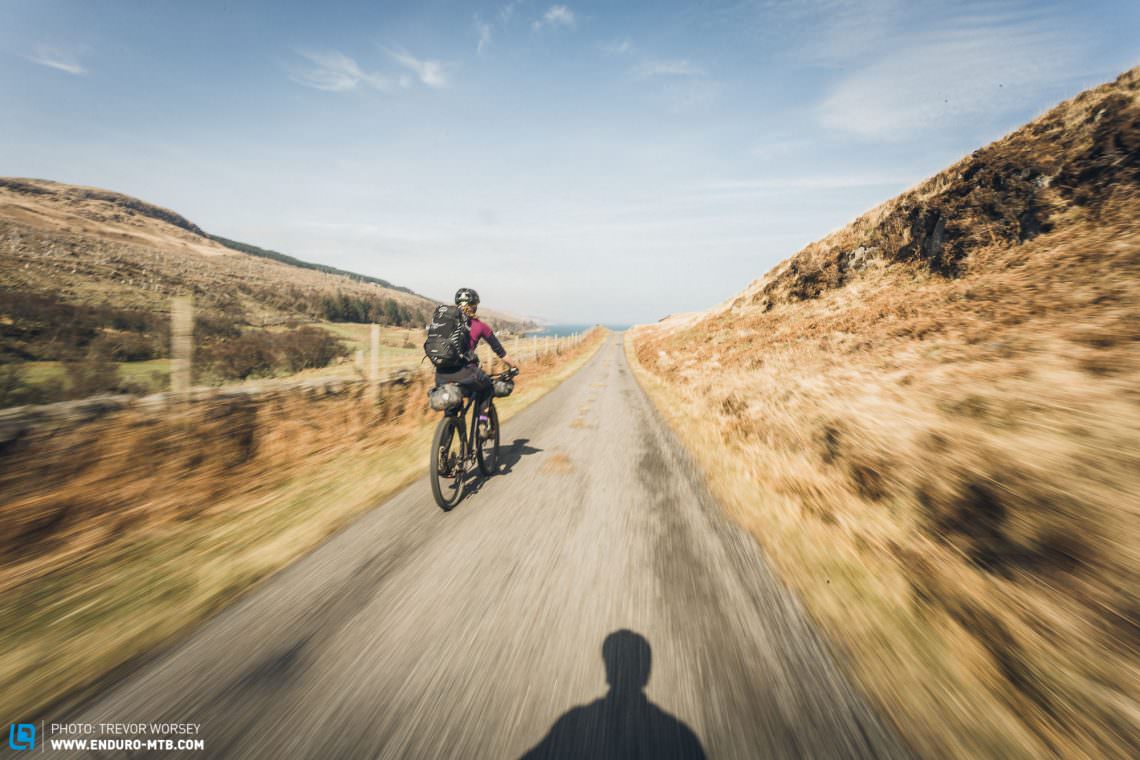
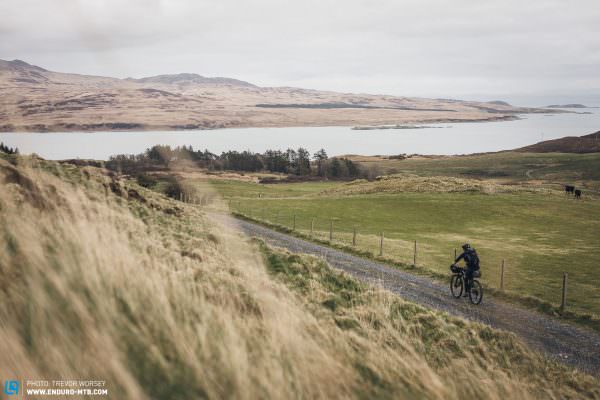
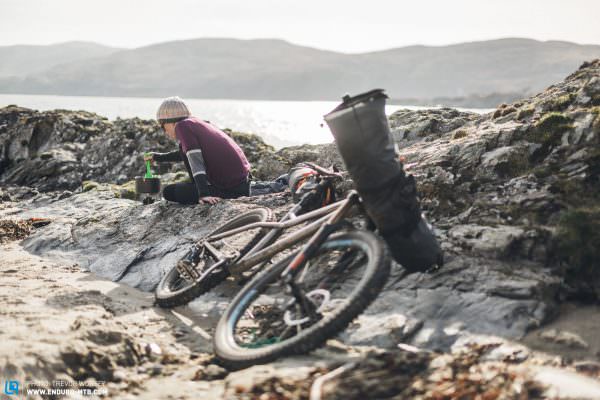
Whisky contains only 3 ingredients, malt, yeast and water, but yet has a taste spectrum that differs wildy. The malt is mixed with hot water and mashed to extract the soluble starch, releasing ‘wort’ a liquid high in starch and maltose. The wort is transferred into huge, sometimes 50,000 litre, fermenting vessels where yeast is added. This starts a reaction that is so violent that the seething and frothing mixture causes the mighty vessels to rock on their bolts. The ‘wash’ mixture is then piped to the heart of the distillery, into the towering copper stills that vary in design to give each whisky its unique taste. Heat causes volatile aromatics to be released from the mixture, as they distill through the copper an experienced stillman then decides when to ‘cut’ the spirit for perfection before it is laid down to rest for at least three years in oak casks.
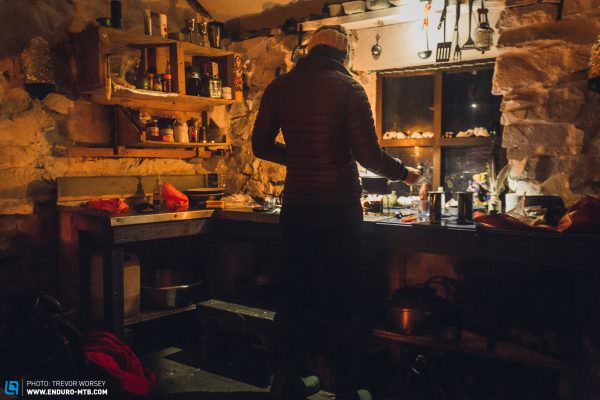

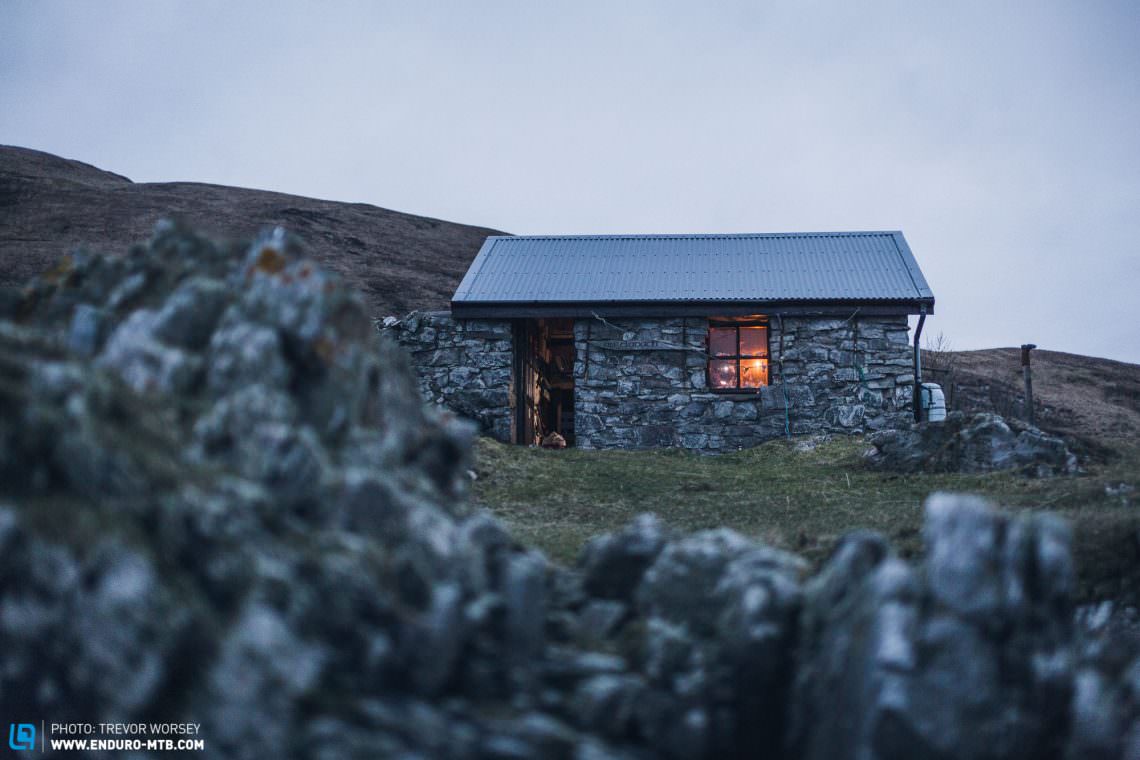


Island life is so different, I asked the hotelier where it would be safe to store our bikes and was alarmed to see she suggested leaving them outside the back, unlocked. Of course, nobody touched them.
Time moves slower when you don’t have WiFi and we had time to sit and soak up the environment and the unique colours of Scotland. Some say the journey is more important than the destination, but after two hours of carrying, pushing and swearing at our bikes as we skirted the rugged coastline, we were delighted to reach our destination, An Cladach bothy. We had the place to ourselves, meeting ‘characters’ at bothies is often half the fun, but it’s always great to gain exclusive use of the free huts, our own private mountain refuge. After watching wild otters eating crabs in the twilight we set about chopping firewood and making the place our own. The fire was blasting out heat, the drams had been poured, and the mediocre pasta meal we were brewing on the stove was sure to taste momentous in these surroundings.
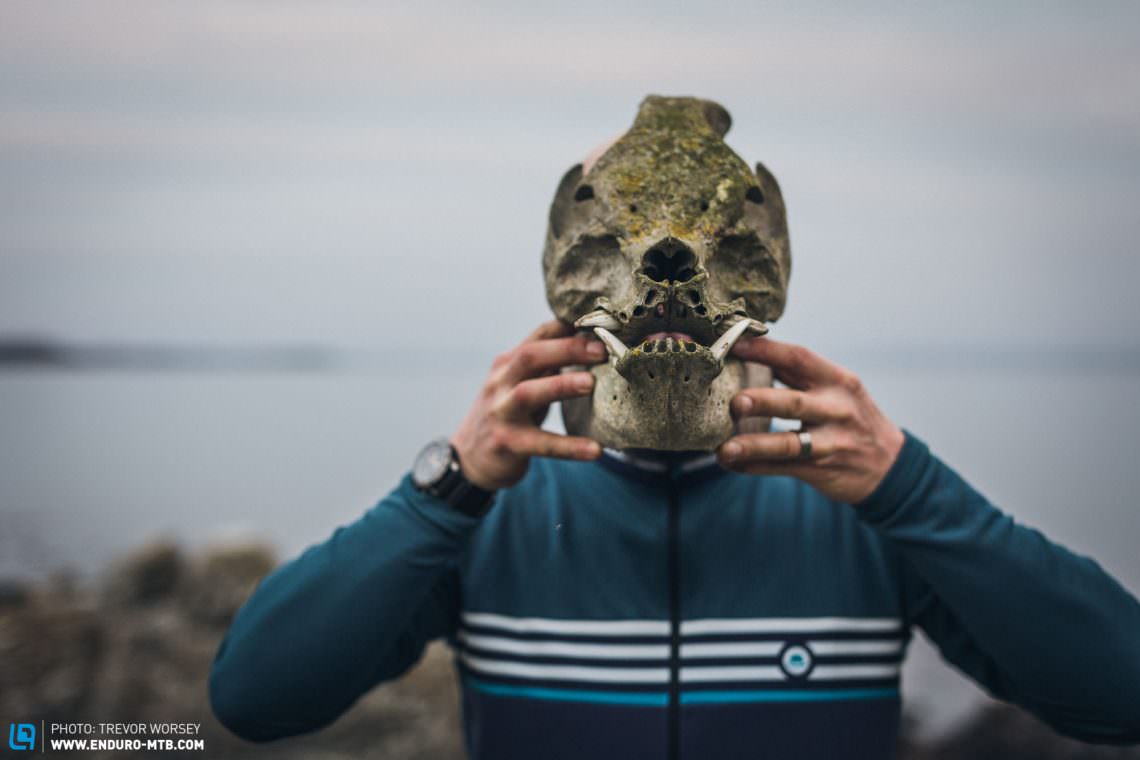
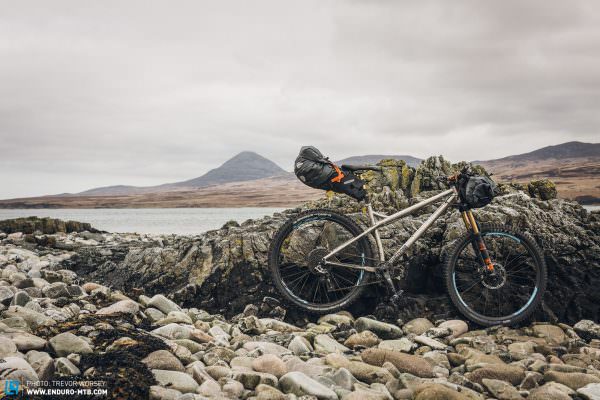
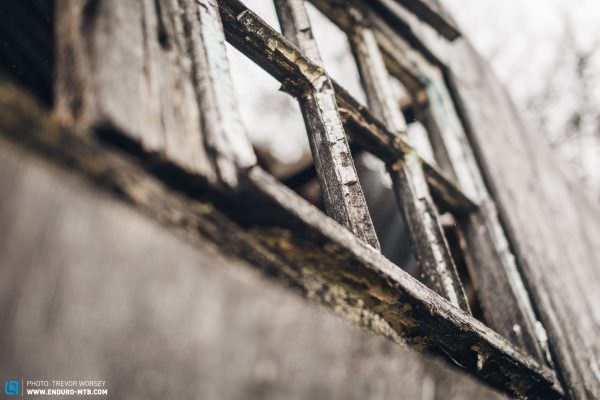
Speaking of the colours of Scotland, fresh from the distillation stills, the spirit that makes whisky is clear, the golden hues take time to develop, released from resins in the barrels or from the afterglow of the rum, sherry, port or bourbon that was previously matured inside the cask. It is these casks that give whisky its complexities, before the expensive spirit is added the interior is first caramelised to release the sugars then set alight to char. To be a true whisky, the alcohol has to rest for a minimum of three years, but many are laid down for far longer, indeed bottles of 70 year-maturation Mortlach have recently been bottled and can be bought for a tasty €13,000 each.
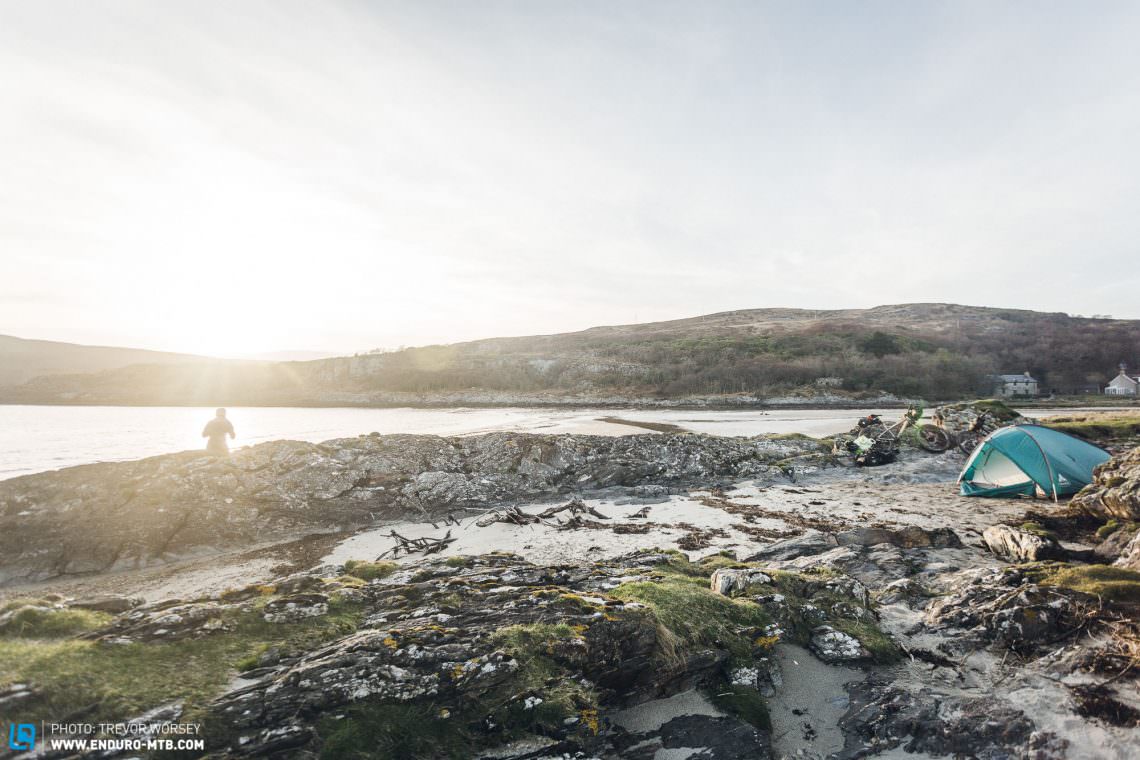
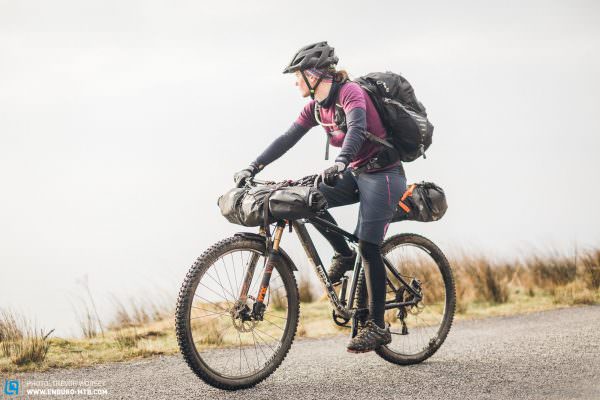
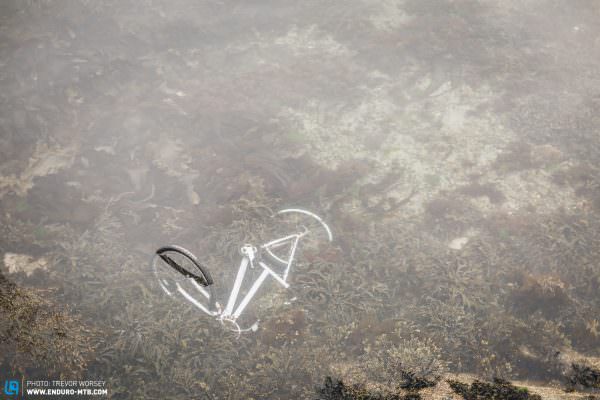
As we rode the length of the island, we warmed ourselves in front of bothy fires, camped on beaches, watched Sea Eagles hunting at dusk, purchased eggs and cakes from ‘honesty shops’ helping ourselves and leaving cash in small Tupperware pots, talked nonsense with the locals and fell comfortably into island life. We stood inside the still rooms of some of the most iconic whisky distilleries, every bikepacking trip is unique, and this pilgrimage has been mine. If you have fallen for the siren song of single malt, sure, enjoy your fireside drams, but one day you really must visit the land in which it has been made.
How to drink whisky
It’s easy to become pretentious when talking about whisky drinking, pomposity suggests many rules, but once you have seen the journey it has taken to your glass, it seems fitting to give it a proper send off. Here are the five rules of whisky drinking.
- Give it a good sniff:smell is our most acute sense, if you only drink whisky you are only getting half the experience. There are only 3 primary colours, but 32 primary aromas. Be sure to make your first impression with the nose.
- Buy a proper glass: if you want to enjoy the complex smell of whisky, traditional whisky tumblers are hopeless. To properly enjoy a malt, get a ‘snifter’ glass with a wide base and narrow top so you can swirl and really get your nose in there.
- It’s OK to add water, but not too much: high strength whisky can be powerful and can numb the senses. Adding a few drops of still water can ‘open up’ the spirit, releasing more complex flavours. Add one drop at a time to taste.
- Do not add ice! whisky romantically should be enjoyed at the same temperature of a traditional Scottish parlour, about 15°C. While this is a little pedantic, adding ice will close down the aromas altogether. Warm the glass in your hand and enjoy.
- Don’t mix single malts with soda – that is a crime.
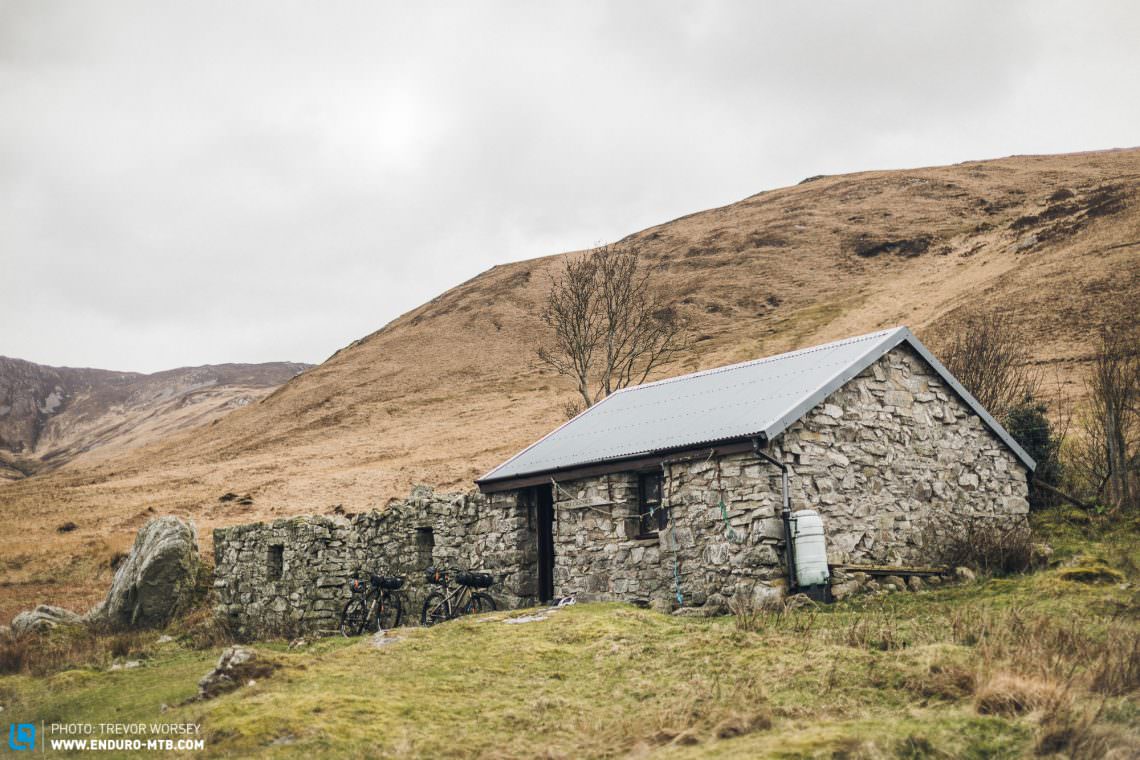
This article is from ENDURO issue #033
ENDURO Mountainbike Magazine is published in a digital app format in both English and German. Download the app for iOS or Android to read all articles on your tablet or smartphone. 100% free!

Did you enjoy this article? If so, we would be stoked if you decide to support us with a monthly contribution. By becoming a supporter of ENDURO, you will help secure a sustainable future for high-quality mountain bike journalism. Click here to learn more.
Words & Photos:











